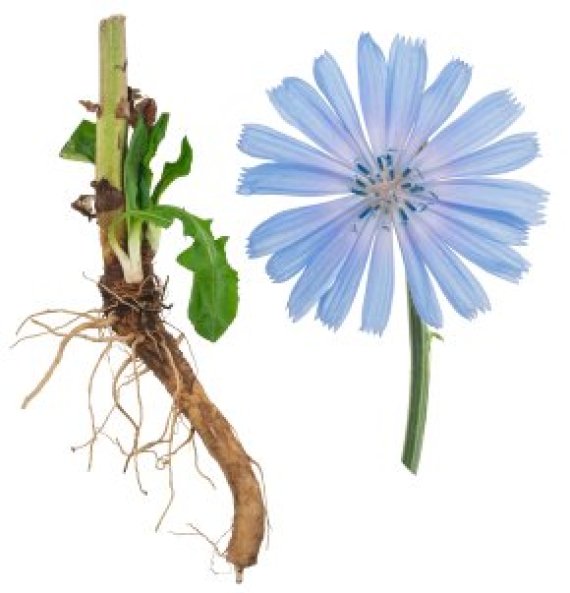Chicory is a little plant with pretty blue flowers, but its most interesting part is underground. The chicory root is a source of the nutritional fibre inulin, which is used in bread, dairy products and cereal bars because it has a positive effect on digestion.
From years of research, plant scientists know quite a lot about how to grow chicory and what nutrients the root contains. But it is not easy for them to increase the production of these healthy substances because the plant is difficult to breed using traditional cross-breeding and selection.
Recently, new breeding techniques such as Crispr-Cas have appeared on the scene, with which chicory can become an even more valuable crop, thinks the EU. It has allocated 7.3 million euros to an international consortium of universities, institutes and companies, to be led by WUR. The researchers will be focusing on good nutritional fibres and medically active ingredients in chicory. The research programme was presented in Brussels on Tuesday 6 February.
The programme aims to develop varieties of chicory which manufacture other health-giving substances besides nutritional fibres, says research leader Dirk Bosch of Wageningen Plant Research. These could include news types of antibiotic or cancer drugs, he says. Certain substances in chicory can limit the growth of bacteria, fungi and tumours.
The researchers want to introduce selected mutations into chicory by switching particular genes on and off using the new breeding techniques. Because these techniques are controversial, they want to get the wider community in on the research. But they are also looking for new ideas for making traditional cross-breeding easier, and for improving the ‘crop architecture’ of chicory.
The research programme, called CHIC, will be financed from the EU’s Horizon 2020 programme. Along with WUR, 17 different partners from 12 different countries are taking part, with researchers from France, Germany, Italy, Finland, Serbia and Poland. The Wageningen breeding company Keygene and the Dutch inulin producer Sensus BV are also involved in the research programme.

